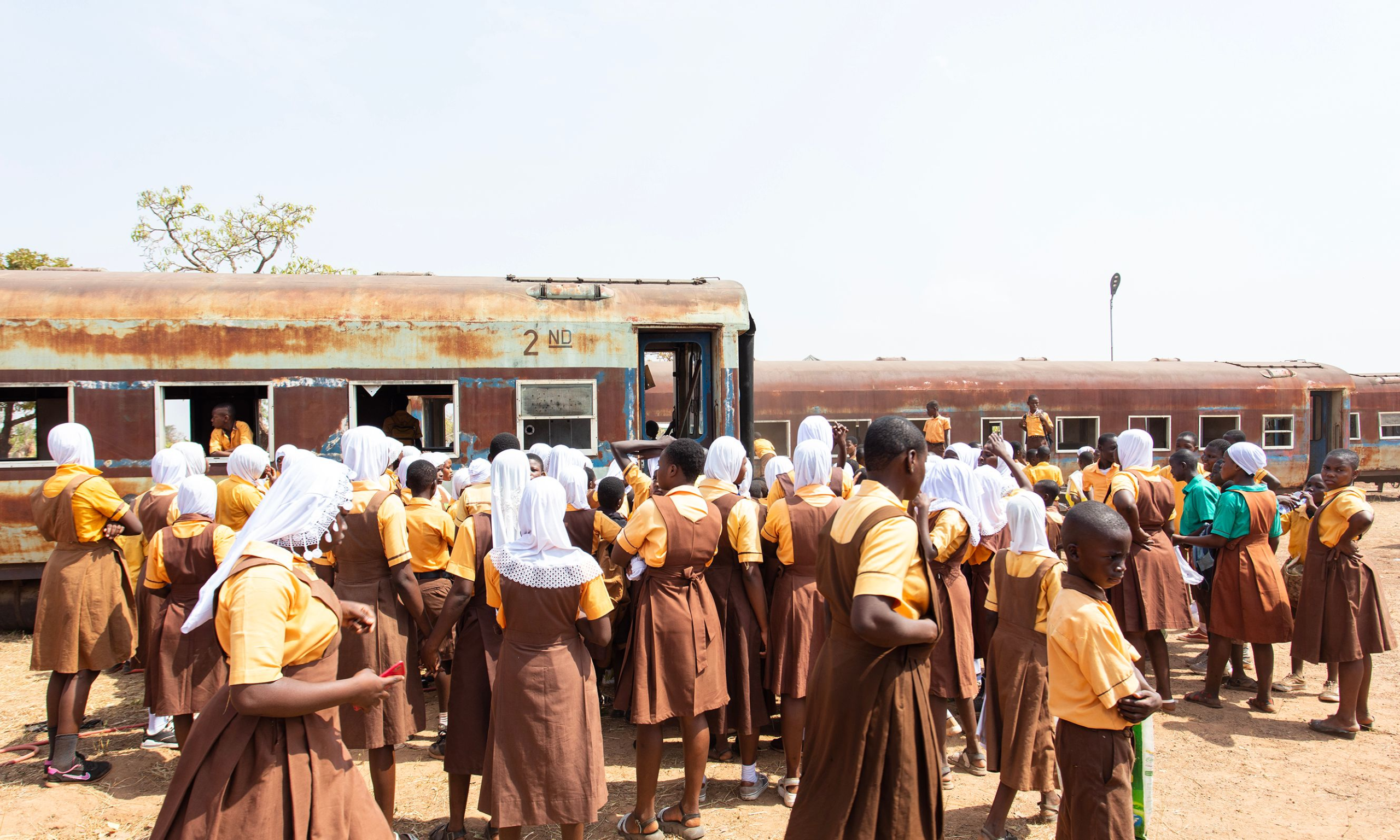Students gather around Ibrahim Mahama's new train project at his studio in Tamale, Ghana Courtesy of Ibrahim Mahama, SCCA Tamale and Redclay
The Ghanaian artist Ibrahim Mahama is expanding his studio. But this is no ordinary building project; the studio, Red Clay, will now feature trains dating back to the late 19th century.
The coaches, which operated during the British colonial era, were transported almost 700km from southern Ghana to Tamale—making them the first carriages (albeit stationary) to be located in the northern region. The intention is to transform them into classrooms, sculptures, libraries, studios and residency spaces. According to the local news site GhanaWeb two of the carriages cost the artist GHS350,000 (£24,000).
The trains crossing the Yapei river in the Northern Region of Ghana on their way to Ibrahim Mahama's studio in the city of Tamale Courtesy of Ibrahim Mahama, SCCA Tamale and Redclay
“I really like the idea that there are things which are completely abandoned and they look like they are obsolete, but when we somehow reconfigure them, we can allow them to become new spaces,” Mahama says. “It allows us to somehow go back into historical forms which we never even imagined existed.”
The trains arriving in central Tamale Courtesy of Ibrahim Mahama, SCCA Tamale and Redclay
The artist, known for draping jute sacks over architectural structures and giving new meaning to transformed materials, first attempted to obtain the trains in 2014, with no success, and again two years later. Then, in 2017, ahead of his Parliament of Ghosts exhibition at the Whitworth Gallery in Manchester, UK—part of the 2019 Manchester International Festival—he revisited the idea. Unable to obtain a permit, he had to make do with incorporating abandoned seats, cabinets and archives from trains built in the early 20th century.
Mahama took some of the archives to Tamale, where they formed part of the inspiration for Red Clay Studio and the Savannah Centre for Contemporary Art (SCCA), an artist-run project and exhibition space, which also offers residencies. The spaces opened in September 2020 and March 2019 respectively.
Ibrahim Mahama explaining his plans for the trains to a local audience Courtesy of Ibrahim Mahama, SCCA Tamale and Redclay
By dint of what Mahama calls “some luck”, he was put in touch with the Railways Development Ministry, which made a deal to purchase the trains possible.
This is not the first time Mahama has looked to transportation for inspiration; the studio already features six Soviet-era aircraft, used as classrooms for local children.
His interest in colonial-era infrastructure stems from his time pursuing his MFA in painting and sculpture at the Kwame Nkrumah University of Science and Technology in Kumasi. There, he worked on what he calls his “first monumental project”: to cover a pre-independence-era bridge with jute sacks. From this grew his fascination with taking structures to different locations and creating new memories.
Train tracks arriving at Redclay. A converted Soviet airplane can been seen in the background Courtesy of Ibrahim Mahama, SCCA Tamale and Redclay
Next on Mahama's agenda is the opening of a recently completed archaeological museum. There, he plans to hold a retrospective, before turning it into a full archaeological museum comprising of repatriated objects.
Running throughout Mahama's work is his determination that all Ghanaians and Africans at large, regardless of their status in society, have the opportunity to experience art. For this to happen, he says, there must be investment in social infrastructure. “It doesn’t matter whether it is state owned or privately owned but at the end of the day, the most important thing is that it is publicly accessible to everyone.”

